- On January 1, 2025
- In News
Heineken Revenue and Production Statistics
Heineken started as a small family-owned brewery in Amsterdam to one of the largest brewers in the world. In 1864, at the age of 22, Gerald Adriaan Heineken bought the Haystack brewery in Amsterdam. Despite his young age and inexperience in brewing, Heineken was armed with courage, self-confidence, and entrepreneurial spirit.
Although the Dutch were brewing ale, brown, and porter, Heineken focused on brewing lager. Nine years down the line, he opened a second Heineken brewery in Rotterdam. With breweries in two major port cities, the Dutch beer market felt the brand’s presence.
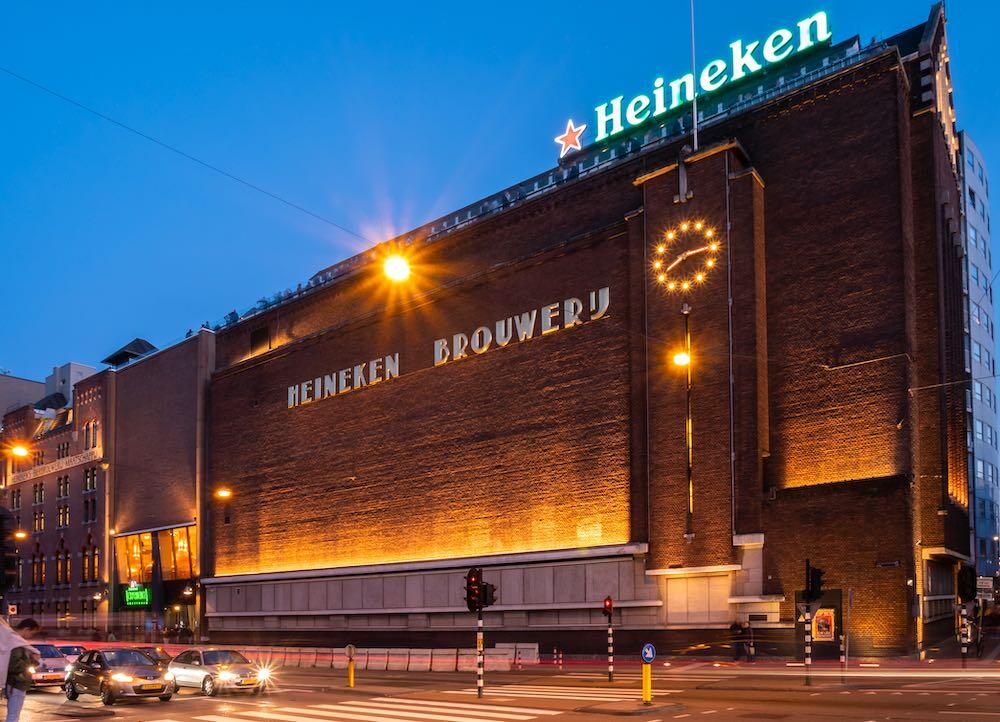
The company invested a lot in research, experiments, and implementing the latest beer technologies. This resulted in A-yeast and the production of Heineken pilsner, which had a unique pure character, taking the brewing world by storm and scooping awards.
After the Prohibition ban was lifted in the USA in 1933, Heineken became the first beer import to re-enter the country. It embraced the American art of advertising, and in four years, exports to the country grew by 600%. Today, it’s one of the most loved beers in America. Below are some essential Heineken revenue and production statistics you should know.
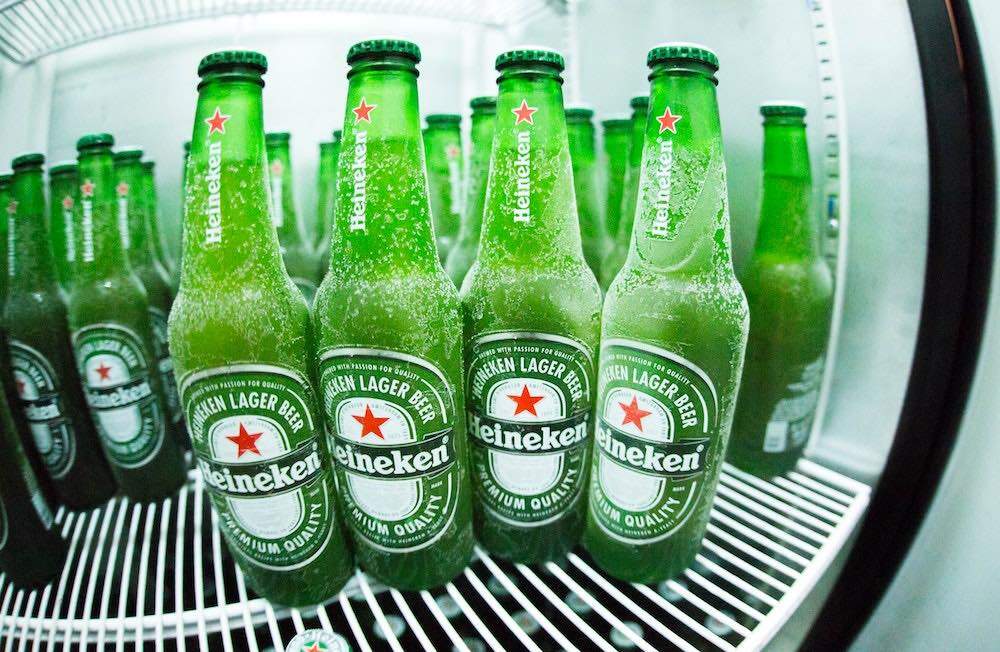
Key Heineken Stats
- Heineken has 167 breweries in 70 countries worldwide, but it’s active in 190 countries.
- In 2020, the company produced 186 million barrels of beer, equivalent to 221.6 million hectolitres. Of these, 35milion (41.8mhcl) barrels were Heineken.
- The annual Heineken revenue amounts to 24 billion euros.
- 84,000 employees work at Heineken worldwide.
Heineken Annual Revenue Growth
The total company revenue worldwide amounted to 23.8 billion euros. That includes 11 billion euros from the European operating segment. This was a 16.11% decrease from 2019.
In 2019, Heineken had annual revenue growth of $26.845B, a 1.16% increase from 2018.
In 2018, Heineken had annual revenue growth of 26.538%, a 7.27% increase from 2017.

Operational Review
In 2019, the net revenue per hectolitre grew in all regions based on geographic basics. As a result, the net income grew by 5.6% organically. This included a 3.3% net increase in revenue per hectolitre and a 2.2% increase in consolidated revenues. In the fourth quarter of the year, Heineken volume growth increased by 12.0%, closing the year by 8.3% growth, which was the highest growth rate in over a decade.
The tables below will help you understand the operational growth based on regions.
| Consolidated beer volume(in MHL) | 4Q19 | 4Q18 | Organic growth | FY19 | FY18 | Organic growth |
| Heineken N.V. | 61.1 | 58.6 | 4.1% | 241.4 | 233.8 | 3.1% |
| Africa Middle East & Eastern Europe | 11.5 | 11.2 | 2.7% | 43.7 | 41.7 | 4.6% |
| Americas | 23.3 | 22.2 | 5.2% | 85.6 | 83.3 | 2.6% |
| Asia Pacific | 8.4 | 7.8 | 12.4% | 31.1 | 29.0 | 11.8 |
| Europe | 17.8 | 17.4 | 0.0% | 81.0 | 79.8 | -0.2 |
| Heineken® volume(in mhl) | 4Q19 | Organic growth | FY19 | Organic growth |
| Total | 11.2 | 12.0% | 41.8 | 8.3% |
| Africa Middle East & Eastern Europe | 2.1 | 6.6% | 7.2 | 11.7% |
| Americas | 3.8 | 26.6% | 13.4 | 16.2% |
| Asia Pacific | 1.9 | 7.7% | 6.2 | 2.2% |
| Europe | 3.4 | 4.0% | 14.9 | 3.1% |
The chart below shows Heineken’s annual growth since 2008
| Heineken Annual Revenue in Billions | |
| 2008 | $21,063 |
| 2009 | $20,508 |
| 2010 | $21,425 |
| 2011 | $23,849 |
| 2012 | $23,642 |
| 2013 | $25,507 |
| 2014 | $25,598 |
| 2015 | $22,775 |
| 2016 | $23,008 |
| 2017 | $24,740 |
| 2018 | $26,538 |
| 2019 | $26,845 |
| 2010 | $22,520 |
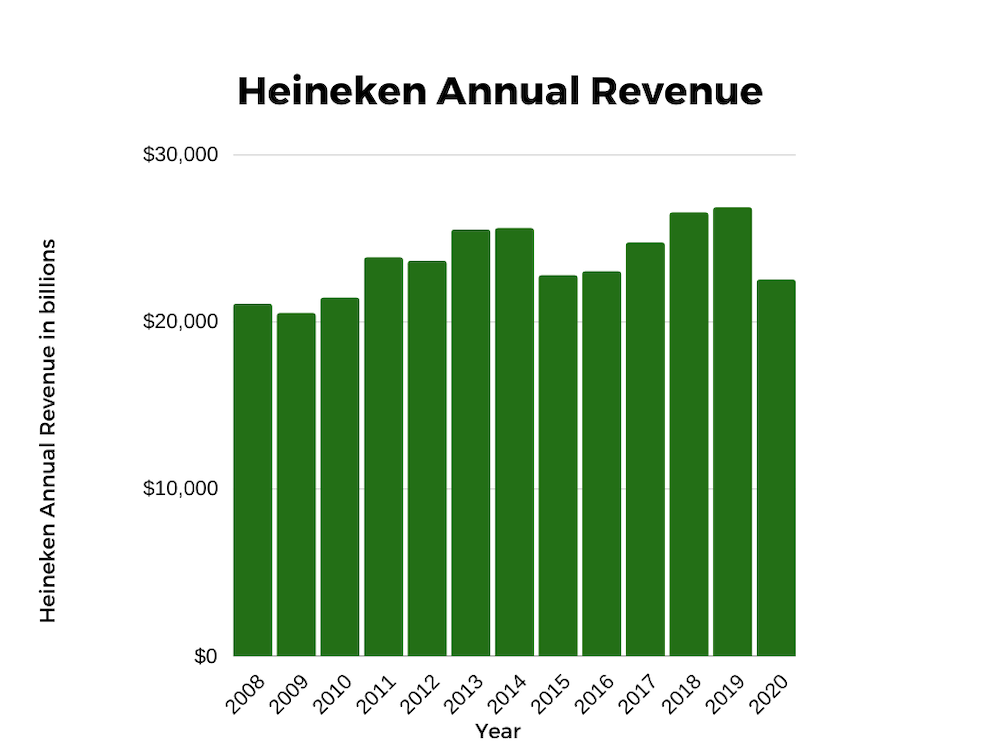
Heineken Breweries
Heineken sells over 300 brands in more than 190 countries worldwide. The company mainly brews ciders and beers, which include local and regional brands and international ones. As of 2019, the brewing company had more than 165 breweries span in over 70 countries worldwide, divided into four global regions.
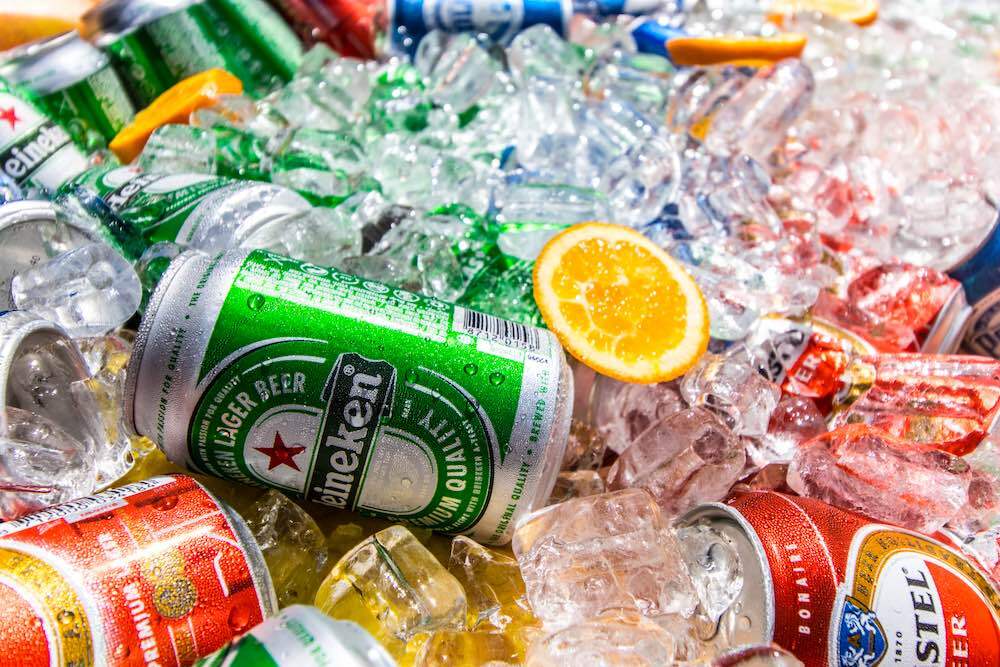
Heineken AMEE (Africa, Middle East, and Eastern Europe)
Heineken imported its first beer in Africa in 1900, and today, it operates in 23 countries within the region. In 2019, the company earned net revenue of 3.370million euros and an operating profit of 408m euros. In the same year, the company produced a total beer volume of 43.7mhl in the region.
Source: Heineken
Americas
Heineken has an extensive portfolio of craft beers in North America. It had net revenue of 7.49m euros and operating revenue of 1.204m euros. That amounted to 29.1% profit. They produced a total of 85.6mhl of beer in the region.
Source: Heineken
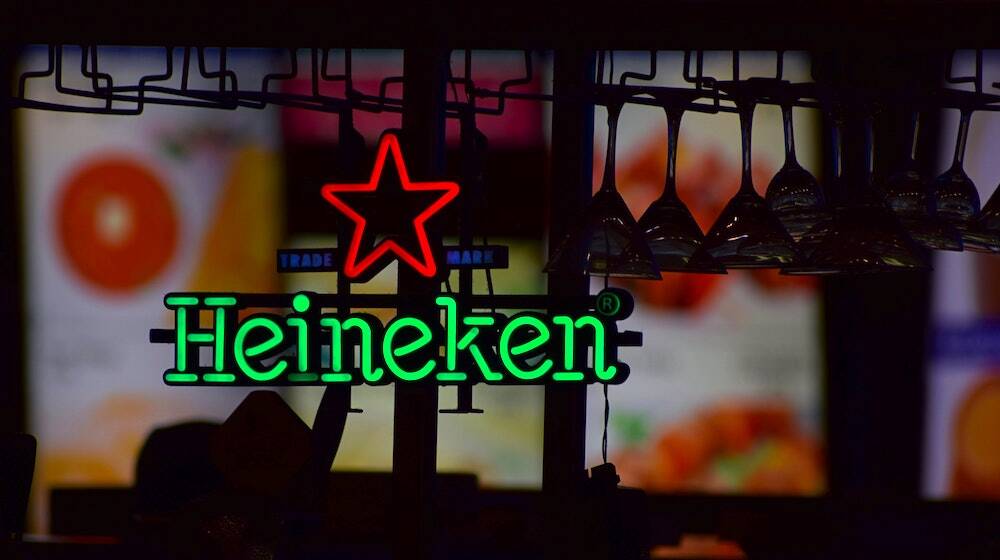
Asia Pacific
The company is experiencing exponential growth in the region. There are 26 production facilities in the area. Of these are:
- 23 are breweries
- One water plant
- One cider plant, and
- One soft drink plant
As of 2019, it had net revenue of 3.205m euros and an operating profit of 1.085m euros. They produce a total of 31.1mhl of beer in the region.
Source: Heineken
Europe
Heineken is the leading beer brand in Europe. In 2019, the company started with net revenue of 10.629m euros and had an operating profit of 1.436m euros. They produced a total beer volume of 81.0mhl in the region.
Source: Heineken
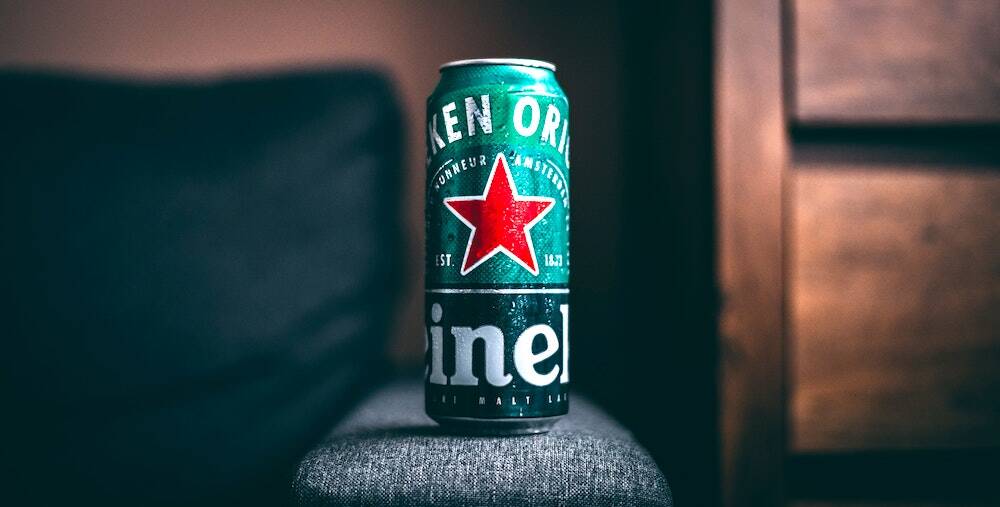
How Many People Work at Heineken
As of 2020, Heineken has 84,000 employees, a 1.18% decrease from 2019, when they had 85,000. The table below shows the annual worldwide employee count from 2015 to 2020.
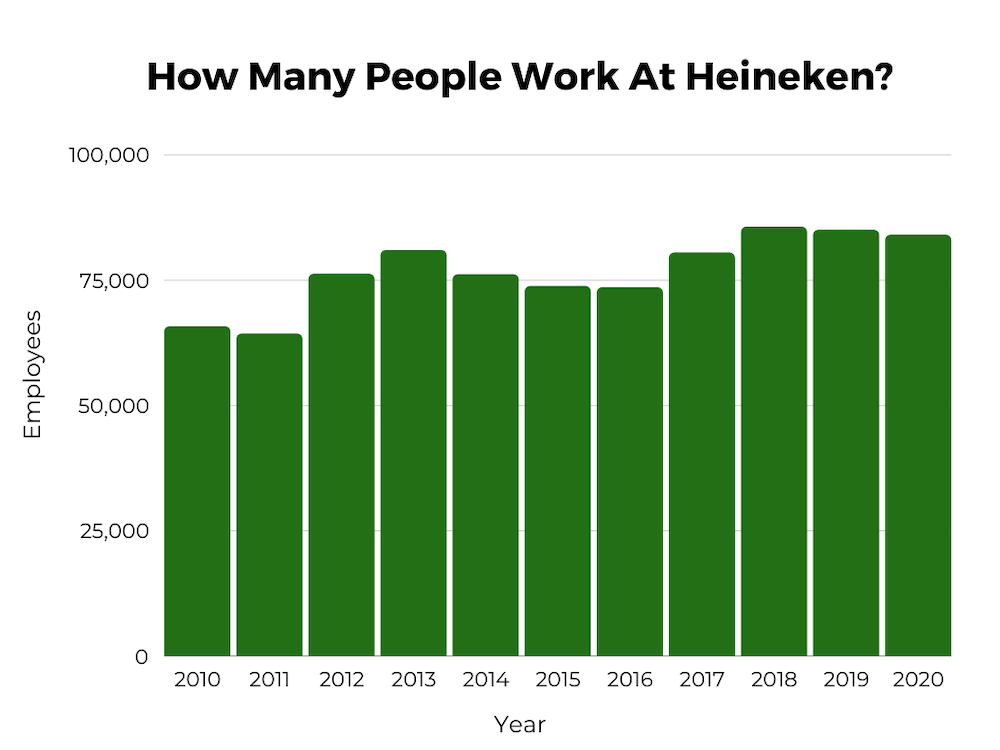
Here’s an table showing the Heineken employee count since 2015:
| Heineken Annual Number of Employees | |
| 2015 | 73,767 |
| 2016 | 73,525 |
| 2017 | 80,425 |
| 2018 | 85,610 |
| 2019 | 85,000 |
| 2020 | 84,000 |
Salaries
The average compensation at Heineken for an entry-level job is $28,000, $53,000 for a junior manager, $59,000 for a manager, and $114,000 for a senior manager.
Sources: Heineken, Macrotrends, emolument
Above are the key figures about Heineken revenue and production statistics. Hopefully, the information is useful in helping you understand Heineken growth history.
How Many Calories Are in a Pint of Heineken Beer?
A pint of Heineken beer contains around 300 calories. The average person needs around 2,000 calories per day to stay healthy. If you drink a pint of Heinekin every day, you would be consuming around 600 extra calories each week.
If you want to lose weight, you should try to cut down on the amount of alcohol you consume. Alcohol has been linked to obesity and other health problems.
MORE AMSTERDAM FACTS >ALSO DISCOVER: